12 Boston Doctors Open Up About Life and Loss on the Front Lines
What’s it really like to give a patient a new face? Make a mistake? Or save someone in a blizzard? Twelve local MDs tell all. —Edited by Brittany Jasnoff, Photographs by David Yellen
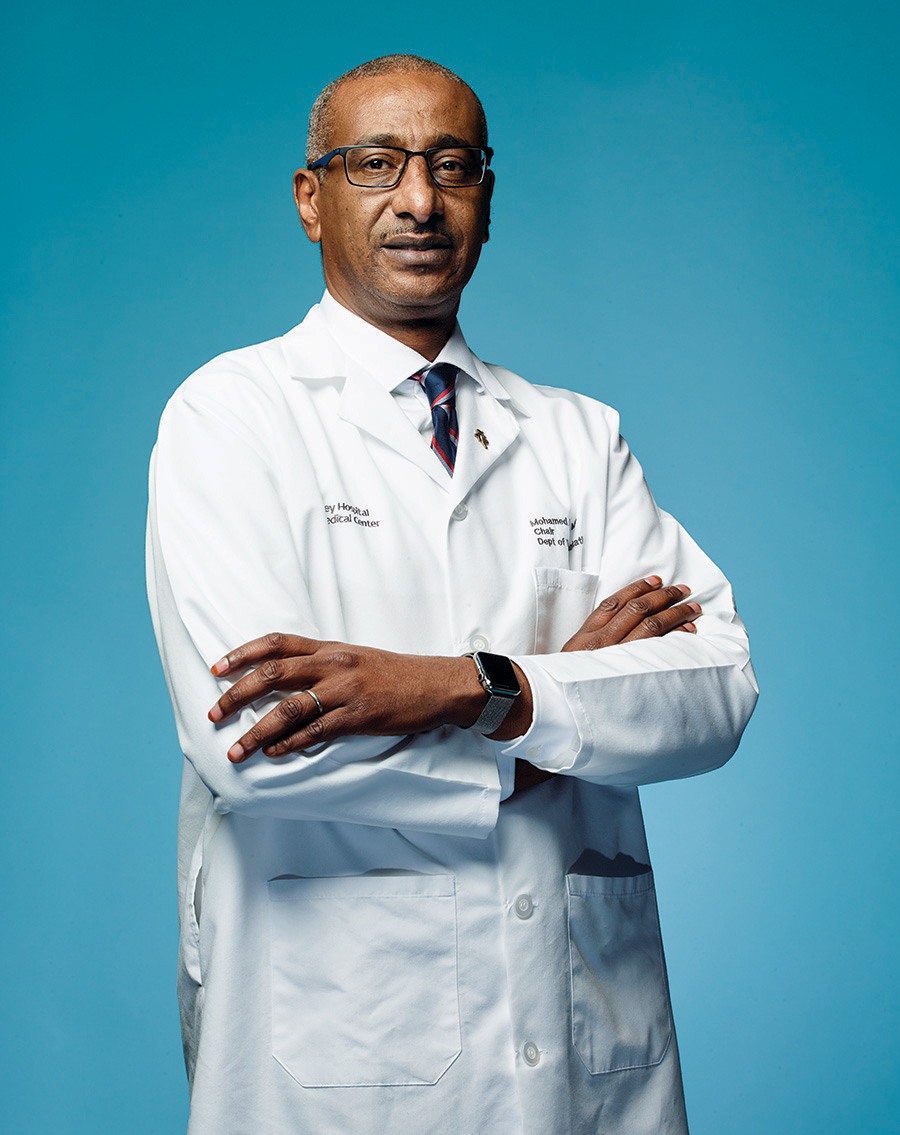
Photograph by David Yellen
WHAT IT’S LIKE…
When You Can’t Save a Life
Mohamed Akoad, Transplant Surgeon
Lahey Hospital & Medical Center
It always worries me when patients start developing complications or issues related to a transplant. After surgery, when I go home, I’m always checking the patients’ labs and calling the ICU and asking how they’re doing.
It’s quite rare when patients don’t make it through a transplant, but it has happened. It’s devastating for me, and sometimes I go for a couple of weeks with my head down to recover from the event. Quite frankly, for some reason, the bad outcomes stick in our heads more than the successes. But then you come to the clinic and see a patient 10 years after transplantation enjoying life and very grateful for the work we do. It makes being up all night, and stressing over the surgery itself and the postoperative course, all worth it.
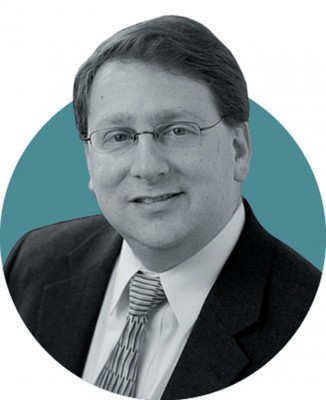
WHAT IT’S LIKE…
When a Med Student Falls Down on the Job
Robert Lowe, Gastroenterologist,
Boston Medical Center
One time, a student had a needle in someone’s abdomen and was taking out fluid. And to his credit, he was doing a fine job, and then he looked at me and said, “Dr. Lowe, I’m feeling a little lightheaded.” I took the needle and I said, “Why don’t you sit down?” At which point he passed out onto the patient’s legs and started sliding down the bed. So with my left hand, I was holding a needle into someone’s abdomen, and my right arm was under the med student trying to keep him from falling and hitting his head. I called for help and the nurses came in, grabbed the guy, and laid him down. And he was fine in about 10 or 15 minutes. He was very embarrassed, and in fact it never happened to him again. The patient was very calm. He just looked at me and said, “Are you okay?” I said, “I’m fine—are you okay?” He said, “I’m fine!” I still take care of the patient to this day and he always talks about this.
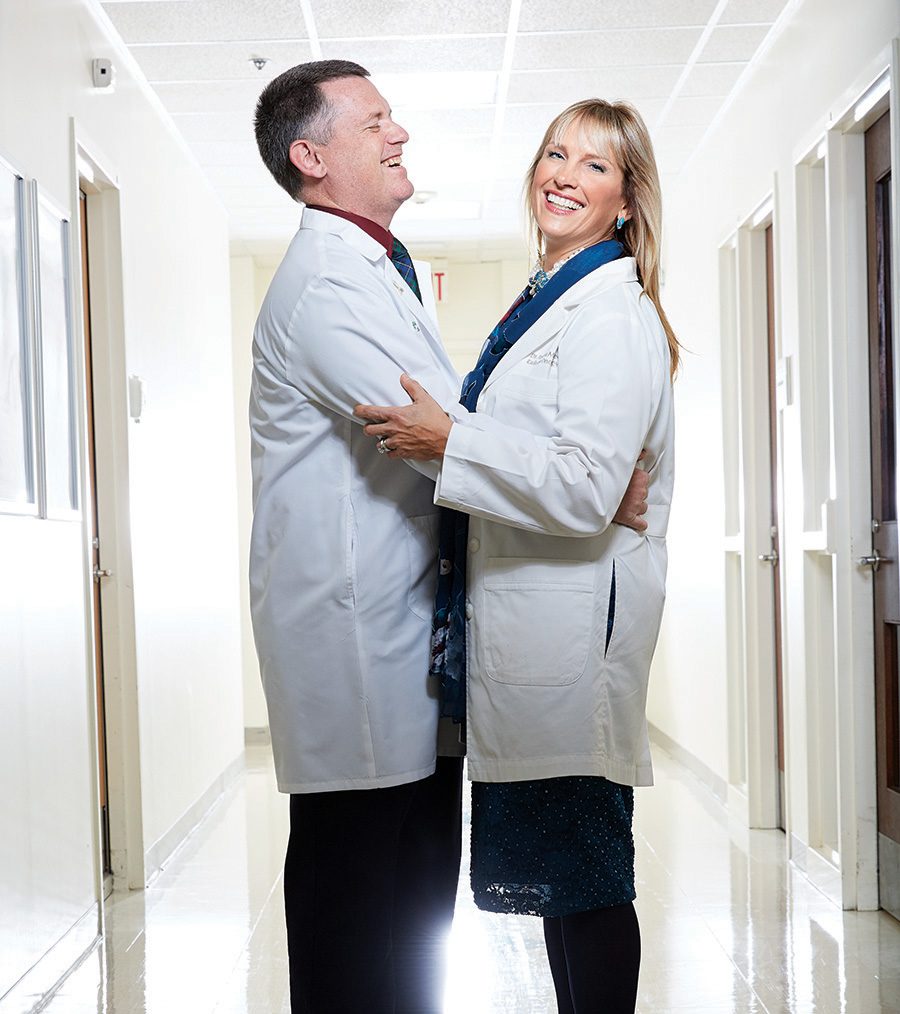
WHAT IT’S LIKE…
To Live and Work with a Fellow MD
Andrea McKee, Radiation Oncologist,
and Brady McKee, Radiologist,
Lahey Hospital & Medical Center
BM: I think we’re lucky because we’ve been able to work together developing the Rescue Lung, Rescue Life lung-screening program at Lahey. But I could definitely see this being a major stressor in a relationship, given how much time both our jobs demand. You see it a lot, at least when you read celebrity magazines. When you see a celebrity who is married to a non-celebrity, it seems like that’s a real strain on the relationship because they’re getting pulled in all these different directions.
AM: I did have to make some changes and pull back a little bit; there’s so much that needs to be done at work that you can get lost. But we also have a lot of fun together when we’re not at the office. We live on the Merrimack River, and we boat with our kids all the time. Our kids play baseball, they ski race. They also know more about lung-cancer screening than any other 14- and 18-year-old on the face of the earth, I promise you.
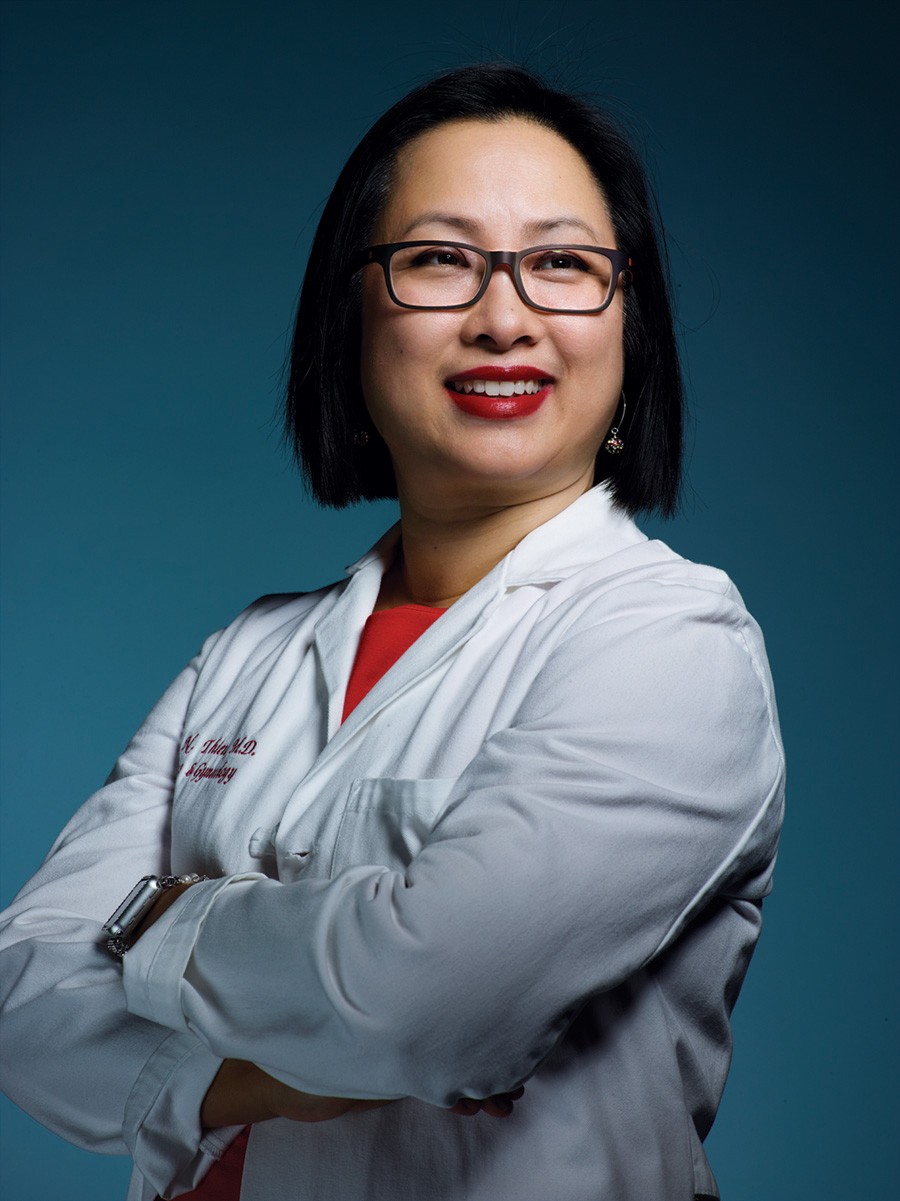
WHAT IT’S LIKE…
To Want to Help More Than You Can
Hong-Thao Thieu, OB-GYN,
Tufts Medical Center
I see lots of pregnant patients who are in the late-adolescent, 18-to-24-year-old range. Lots. I all but adopted a 19-year-old and her newborn one weekend. She was a smart, hardworking mother who was in foster care because she had no one. She came in with no prenatal care and just had a perfect baby with no epidural, nothing. And then she was afraid to go back to her foster home, because she didn’t know if they’d take a newborn. You could see that she wanted to bond with her baby, but she wasn’t sure if she should, because that baby may go into foster care somewhere else. She didn’t do drugs, she was working, and she was really trying, but she had just no one. And then you see a perfect newborn, who has his entire life ahead of him, and like, what’s going to happen? The last I heard was that DCF was very involved and they were going to try to keep the mom and baby together. She’s going to need a lot of help.
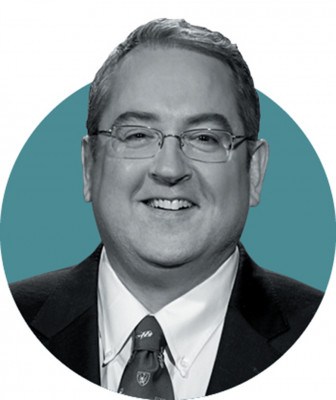
WHAT IT’S LIKE…
To Get Pulled Over By a Patient
Daniel Jones, Bariatric Surgeon,
Beth Israel Deaconess Medical Center
I had been up all night and was driving at around 9 a.m. A police officer was watching construction across the street and traffic was barely moving at all. I dozed off and slammed on my brakes. I did not hit the car ahead—relief!
Next thing I know, the police officer was running straight at my car in a sprint. How could he have seen me? Could I be arrested for reckless endangerment? I could feel the adrenaline; my heart was racing. How much would the ticket be?
The officer banged on the car window and signaled for me to open it. He poked his head in the window, and much to my surprise, it was a former patient! “Hey, Dr. Jones…I am down 80 pounds,” he said.
“You’re not arresting me for falling asleep?” I asked.
“No,” he replied. “I recognized your car and thought I would run over and let you know that I’m doing great.”
WHAT IT’S LIKE…
To Be a Doc to the Docs
Gary Chinman, Psychiatrist,
Private Practice/Brigham and Women’s Hospital
Doctors have a really hard road. They come with real anxiety and oftentimes depression about the changing and larger demands of their job. A lot of the demands put on physicians are things they’re never trained to do: Doctors of a certain age, for example, did not grow up with computers and have struggled to learn how to use electronic medical records. A lot of them now have to tend to the machine, which none of them are in love with, and that’s an onerous burden for them.
Burnout is also endemic in the medical community. It’s really sad because you have wonderful people who are going into the field and are being chewed up by it. About 400 doctors a year kill themselves because of maybe a clinical diagnosis of depression or burnout or feelings of profound inadequacy.
What’s really prevalent among doctors in Boston is imposter syndrome, where very accomplished or successful doctors think they are otherwise, that they’re not even adequate at their job. As you can imagine, there are so many smart doctors in Boston who are doing tremendous things, which makes a lot of physicians insecure about what they’re doing.
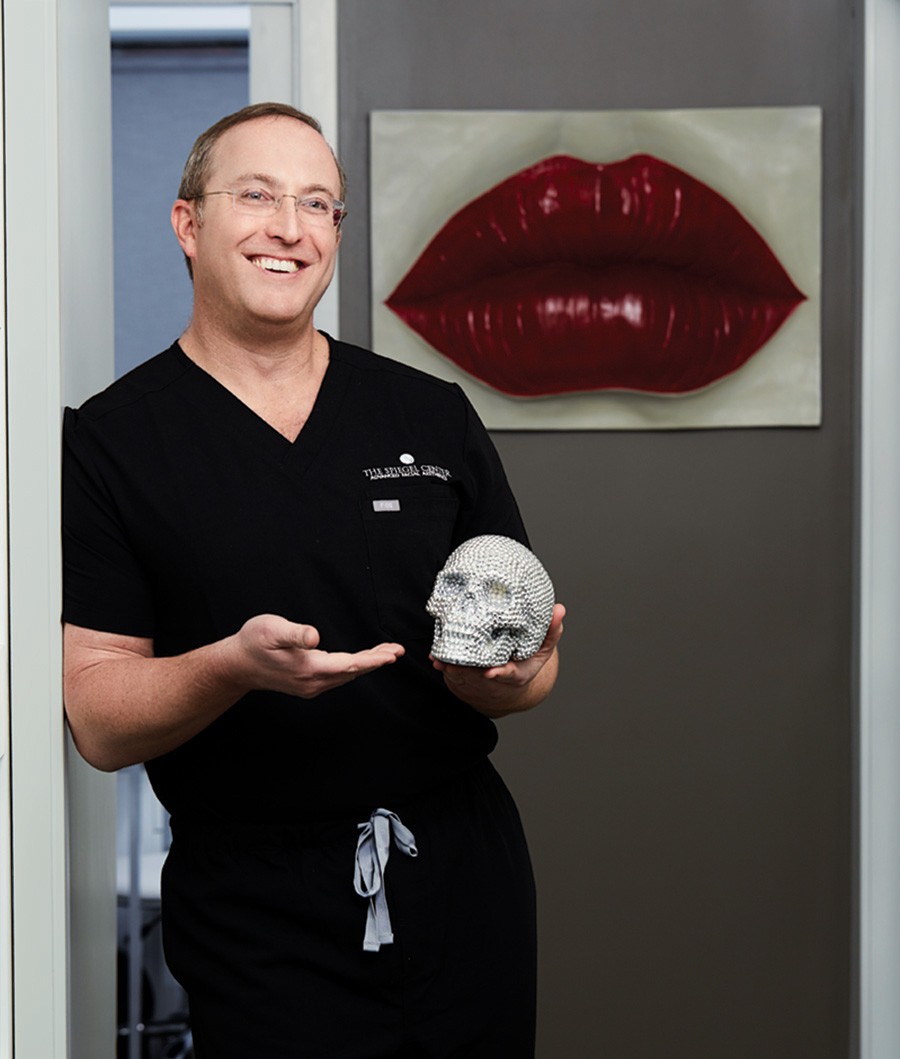
WHAT IT’S LIKE…
To Give Someone a New Face
Jeffrey Spiegel, Facial Plastic Surgeon,
The Spiegel Center/Boston Medical Center
Good plastic surgery is about restoring, or creating, the features of the face to allow people to see you in the way you want to be seen. Sometimes a face doesn’t look attractive, not because of the angles or features, but the way the lighting is; your brain uses light to determine attractiveness and gender. I will make someone’s eyes brighter and actually shift how light bounces off the face by changing the bone.
Take, for example, the 10-hour face I just did on a 75-year-old. I changed her forehead bone, her nose, her upper and lower eyelids, cheeks, lips, chin, jaw, neck. I moved her hairline around. I changed her eyebrows. There is nothing left that we didn’t do.
We have people who come in from New York, Los Angeles, Las Vegas, Miami, from all over. There are those who fly to the top restaurants in the world and there are those who want to go to the best plastic surgeons in the world. We have a back door to the office for celebrities. I’m pretty good at keeping my fandom in check. There have been times where I am like, “Wow! So and so is here, oh my God!” But to them I say, “So nice to meet you, I’m a fan.” I assume they don’t want that in that moment. They are the vulnerable ones and want to talk to me about an issue they have, so I focus on their needs more than anything else.
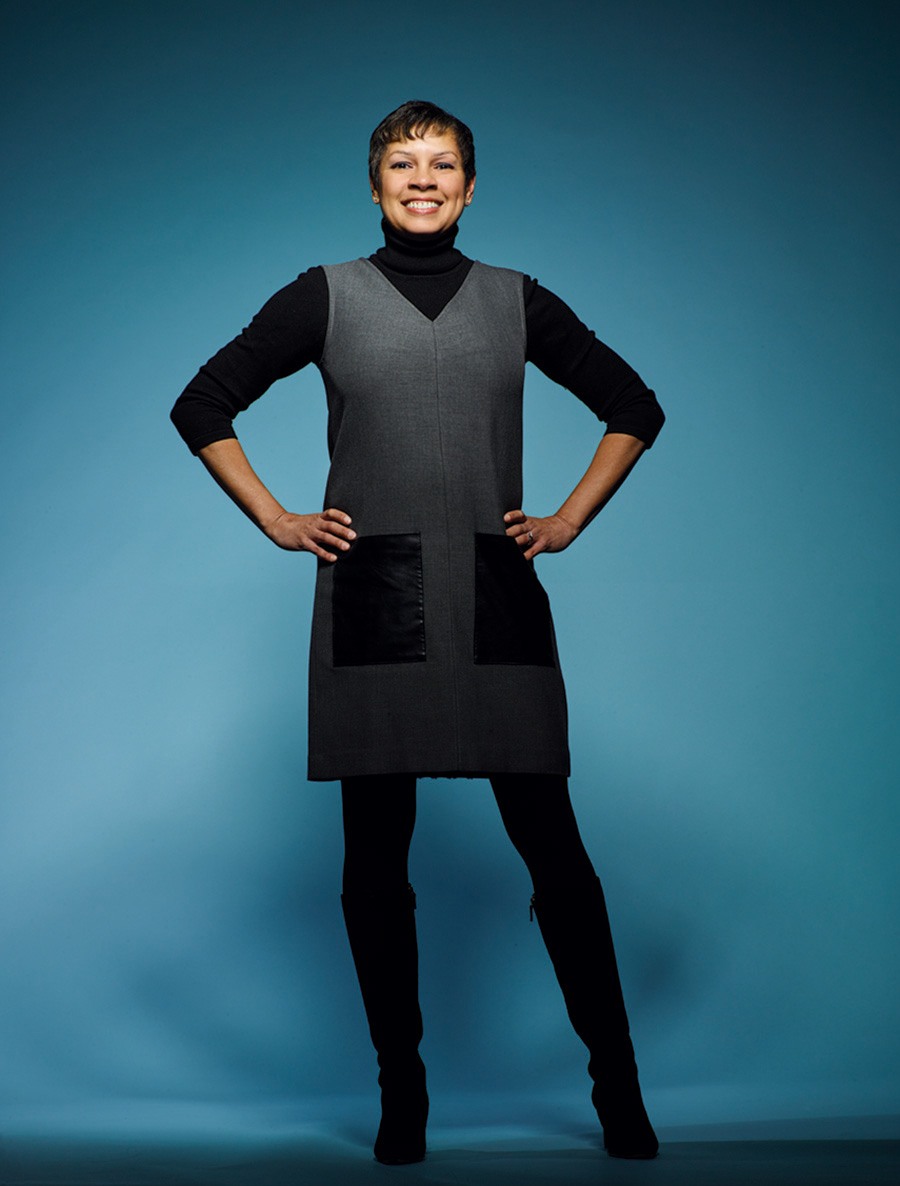
WHAT IT’S LIKE…
To Help a Transgender Teen Transition
Traci Brooks, Adolescent Primary Care Physician,
Cambridge Hospital
Sean was the first patient that I had who transitioned, so he definitely taught me plenty. At first I saw him for all of his testosterone injections because both he and his mom were too squeamish to use the needles themselves. It was great because then I could keep track of his progress.
An interesting visit that we had once was about the use of contraception—testosterone is not 100 percent effective by itself, at all!—and his need to get Pap smears done. It was admittedly rather challenging for me, and I did kind of fumble a little around what clinical language to use, which probably didn’t come out so great. I mean, it is awkward to discuss with a male patient his need for a Pap smear, and he was my first patient that I had to have this conversation with. I didn’t have a lot of direction! I asked him how he would most like for me to refer to his body parts and followed his lead on the vocabulary.
I have gotten a bit smoother with subsequent patients and feel more comfortable now.
Though he has outgrown me and moved on to an internist, Sean and I still have a pretty good relationship to this day; he even gave me permission to tell his story. But we had our share of head-butting. I remember for a while he was extremely concerned about being too short and wanted to get leg-lengthening surgery in another country because it was too expensive to do in the U.S. I kind of felt like I really needed to put my foot down about that one for safety’s sake.
I am so very grateful as a doctor for all I have learned from Sean. He, along with several other patients, inspired me to take an in-depth medical-education course in Advancing Excellence in Transgender Health not once but twice. All patients deserve respect and to be treated with dignity, no matter which boxes they check off on forms—for race, ethnicity, age, or gender. To me, these kids aren’t ever check boxes. They are all kids, with feelings, thoughts, and opinions. My job is to help them become healthy adults. I love it and would never change it for the world.
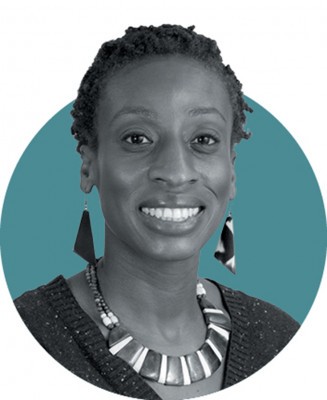
WHAT IT’S LIKE…
To Make Hospitals More Inclusive
T. Salewa Oseni, Breast Surgical Oncologist,
Massachusetts General Hospital
When I look around Mass General, there aren’t that many of me. One of the things that I wanted to do as the codirector of diversity for the surgery department is make the hospital reflect our community, our city, and certainly the country. It makes us more informed about the issues that our patients face. There are some things that you’re just not going to be aware of unless you have people at the table who can inform you about that.
As a female surgeon, I would say the most common experience that’s happened to me—and to a lot of women in my situation—is when you walk into the room with your team and it doesn’t cross the patient’s mind that you’re attending. They think you’re the nurse, or hospital staff, but they don’t immediately think that you are their surgeon. They may ask you, “Are you going to be doing my surgery?” And it’s like, “Yes. I’m the one in charge.” Starting out, it happened at least once a month, but as you get further along—and I guess you get more of an air of authority about what you do—people stop asking you that.

WHAT IT’S LIKE…
To Help Get Thousands of Women Pregnant
Rachel Ashby, Reproductive Endocrinologist,
Brigham and Women’s Hospital
My husband and I first conceived after dinner and a bottle of wine—we had a little contraceptive mishap. And then we couldn’t get pregnant again. This was a very difficult time in our marriage. It took us a long time, but my final treatment that was successful was twins. When I was going through infertility treatment, though, I remember calling my mom in tears because a cycle didn’t work, and my mom said, “Rachel, this is going to make you a better doctor and a more empathetic doctor.” And it has helped me mature as a doctor and better relate to my patients.
The most common thing couples are not on the same page about is the idea of when and how many. One of the things I make a point of is to try to understand the psychosocial aspects of what we do. It’s a medical problem that’s not so uncommon, but the level of emotional discord and upheaval in the family is really significant. Studies show a typical patient undergoing IVF is similar to a patient undergoing breast cancer treatment. Many of us, women and men, start to associate identity, value, and self-worth with fertility. It truly does have an impact on couplehood.
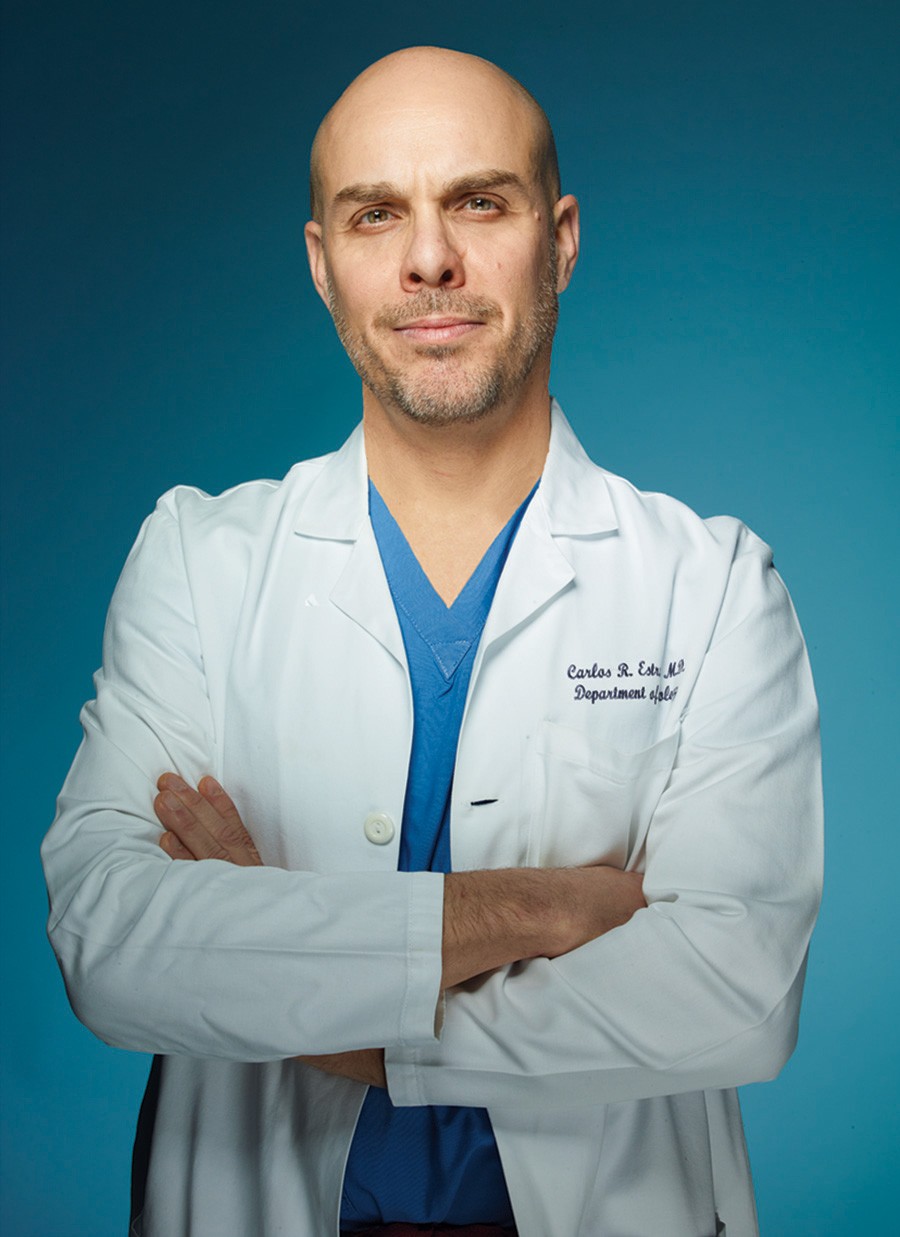
WHAT IT’S LIKE…
To Rescue a Child from the Brink
Carlos Estrada Jr., Pediatric Urologist,
Boston Children’s Hospital
When there are serious complications, I don’t care how experienced you are, you just can’t get used to that. I had a patient once, about seven or eight years old, who had spina bifida, and she had a life-threatening infection of her brain after a major reconstructive surgery that I did on the bladder. She had a tube connected to her brain from the abdomen to drain the fluid in the brain, because for kids with spina bifida, their brains don’t drain well. The tube became infected—it was just one of those things that happened—and she got a really severe brain infection. I don’t think I left the hospital except for a few hours those few days. I rolled her down to the CT scanner myself, and I honestly couldn’t leave the bedside. I was just traumatized—not as much as the family, of course—but it was just so dicey.
She’s now 15 and doing beautifully. Last year I was honored by an initiative at the hospital called Milagros para Niños, which each year recognizes a faculty or staff member with some Latin connection. My patient and her family came to the gala, and her mother spoke about the experience. Later on, the girl was out there dancing in her wheelchair to Latin music. I’m just so hopeful for these kids, that we can return some normalcy.
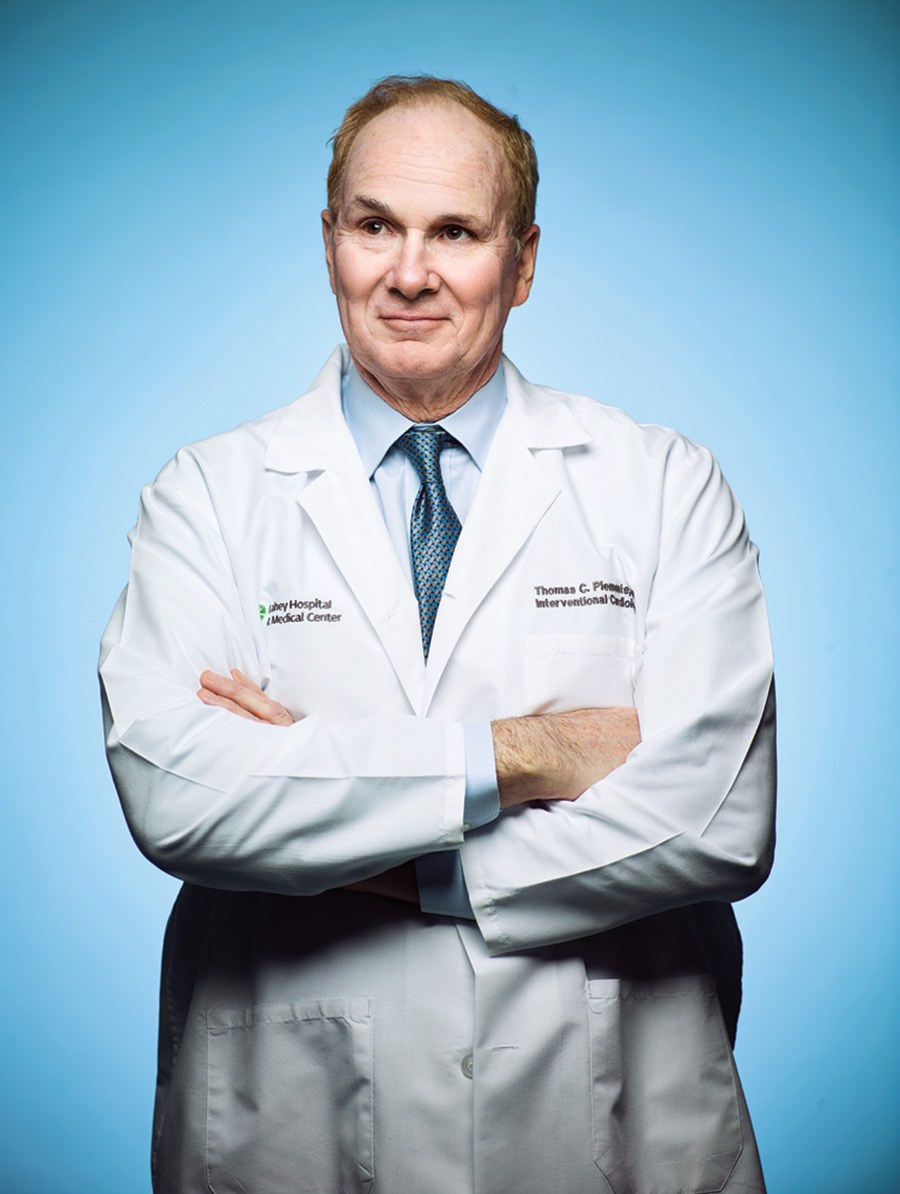
WHAT IT’S LIKE…
To Save a Life in a Blizzard
Thomas Piemonte, Interventional Cardiologist,
Lahey Hospital & Medical Center
In the middle of the worst blizzard of the year seven years ago, a 32-year-old woman who was six and a half months’ pregnant collapsed at home. Her husband found her on the floor and called an ambulance. At Winchester Hospital, she was in cardiogenic shock, which basically means you don’t have a blood pressure. In fact, she was arresting. The doctors at Winchester realized that she probably wasn’t going to survive, and they said, “Well, we better save the baby.” So right there in the ER, they took the baby out via cesarean section.
I was staying in the Marriott right next door so I wouldn’t have to drive from Dover in the storm, and I got a phone call at 6:30 in the morning from the emergency room at Winchester: “We’ve got this woman, she’s got hardly any blood pressure, we want to send her over to Lahey’s cath lab to try to help her out.”
When she came up to our cath lab, she was really sick. She had a massive pulmonary embolism, which is a clot, obstructing all the blood flow coming out from the right side of her heart. We made the choice to bring her down to an operating room, put her on cardiopulmonary bypass, open up her heart, and perform a pulmonary embolectomy to take the clot out manually. After that, she was so sick from two surgeries in one day that her heart wasn’t pumping at all. Both ventricles totally failed. And she didn’t have any ability to generate a pulse.
At that point you can support somebody, when their heart isn’t beating, with extracorporeal oxygenation, and we decided to do that. And this is where it became a problem. Once you put somebody on that kind of support, you need a 24/7 team to monitor it, and not that many hospitals have that. MGH said they could take the patient, so at the request of the doctors there, we didn’t completely close the sternum so that they would have easy access to the heart. But remember, this is a blizzard and we had to get her an ambulance with an open chest.
I was thinking about her family, you know. I’ll tell you, it still is an extremely emotional thing for everybody to talk about this case, because she was so close to not making it. It was a string of doctors along the way who made very, very difficult decisions on a wing and a prayer. And there was so much on the line. This is a 32-year-old woman who was having her first child, and a husband who was around the same age who told me that he thought he wouldn’t have a chance to see his wife or child. When you start out in medicine, you are attracted by the technology, the machines, and the things you can do, but as you get older, you realize that as wonderful as that can be at times, it’s not the heart of the issue. The heart of the issue is the fact that you’re taking care of wives, husbands, mothers, and fathers, and that makes the practice of medicine a lot more rewarding and also a lot more painful.
The patient was at MGH for three weeks, and then walked out of the hospital. And the baby survived.


